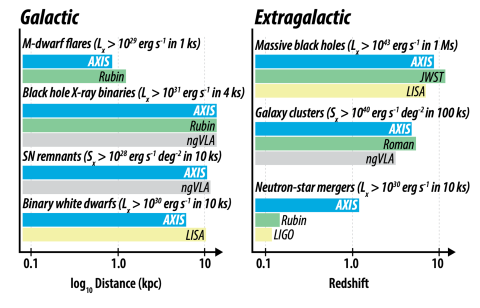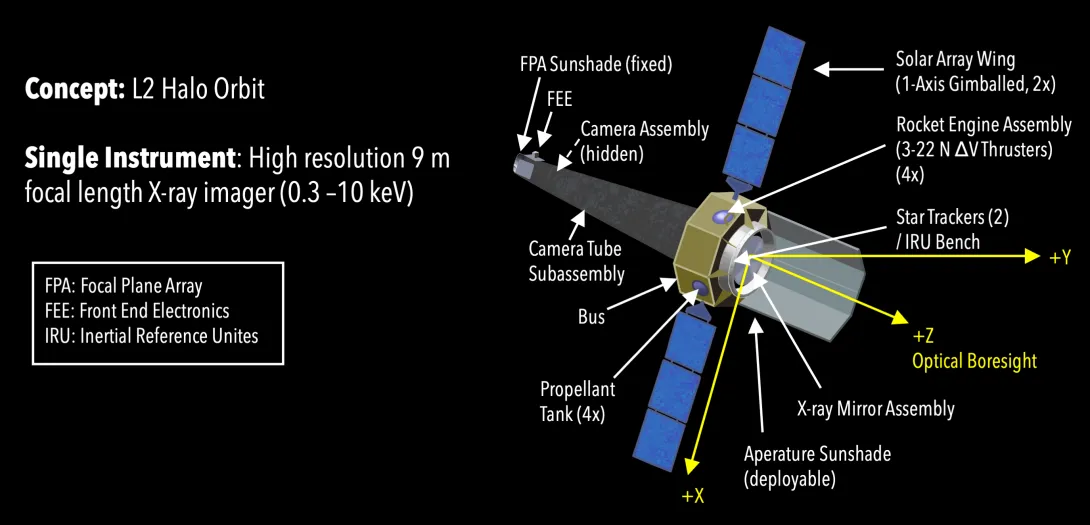Mission Overview
AXIS is a single-instrument observatory building on the heritage of Chandra and XMM-Newton. It will have a 5-year prime mission design. The PSF, effective area and low background give exquisite point source sensitivity (F0.5-2.0keV=3x10-18 erg/s/cm2 FOV-average in 7Ms). AXIS is a powerful facility for transient science, featuring a rapid 2-hour response time to alerts and onboard real-time transient detection. More than 70% of its observing time will be dedicated to Guest Observer science.
AXIS Specifications
| Parameter | Baseline Value |
|---|---|
| PSF | 1.50” on-axis, 1.75” FoV-ave (HPD) |
| Effective Area (incl. detector) | 4200 cm2 at 1 keV; 830 cm2 at 6 keV |
| FoV | 24 arcmin diameter |
| Bandpass | 0.3-10 keV |
| Readout rate | >5 fps |
| Slew rate | 120 deg. / 9.5 min. |
| Orbit | L2 Halo Orbit |
AXIS vs. Chandra
- 5-10x larger effective area
- 6x better FoV-ave PSF
AXIS vs. XMM-Newton
- 4x larger area below 2 keV
- 10x better PSF
AXIS vs. Swift
- Same fast To0 Response Time
- 60x better sensitivity
AXIS vs. NuSTAR
- Superior area below 8 keV
- 40x better PSF
Looking Into the Future
AXIS matches expanding horizons of the panchromatic facilities of the 2030s. X-rays peer into the central engine of JWST, LIGO and LISA sources. AXIS is the only X-ray mission that can match their horizons.



